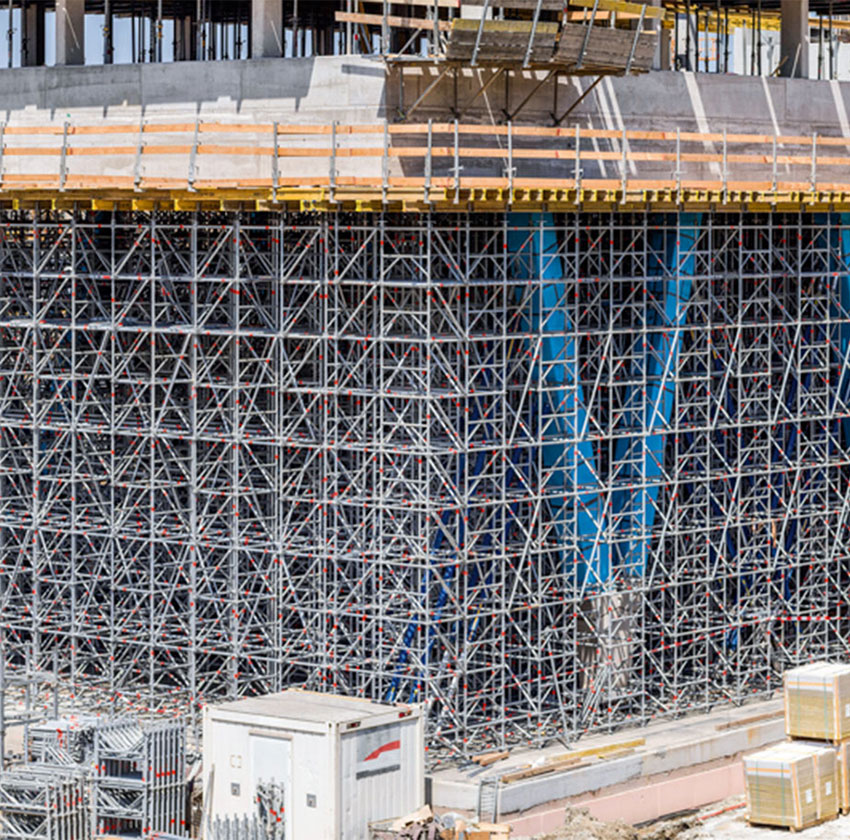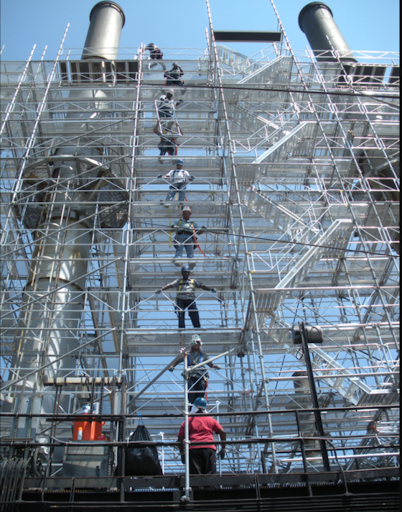Quality Scaffolding Surrey for Both Residential and Commercial Projects
Quality Scaffolding Surrey for Both Residential and Commercial Projects
Blog Article
Checking Out the Different Sorts Of Scaffolding Used in Building And Construction Jobs
The building and construction sector depends heavily on different kinds of scaffolding to fulfill particular job needs, each offering distinctive advantages and applications. Conventional framework scaffolding supplies a tough structure for basic jobs, while suspended scaffolding is vital for job on skyscraper frameworks.

Traditional Framework Scaffolding
Traditional structure scaffolding is just one of the most extensively utilized approaches in the building and construction market due to its effectiveness and adaptability. This system consists of straight and vertical structures that are set up to produce a stable system for materials and employees. The main parts include upright posts, straight ledgers, and diagonal dental braces, which together give a solid framework that can support considerable lots.
Among the key advantages of standard structure scaffolding is its adaptability to various building jobs, varying from residential buildings to large commercial structures. The modular style enables for simple setting up and disassembly, making it effective for both long-lasting and temporary jobs. In addition, the system can be tailored in height and size, fitting various building styles and website conditions.
Safety is vital in scaffolding applications, and typical structure systems are outfitted with guardrails and toe boards to avoid drops and ensure employee defense. Routine evaluations and adherence to safety laws are critical in preserving the stability of the scaffold (Scaffolding). Overall, typical structure scaffolding stays a fundamental selection in the building and construction market, providing a reliable system for labor and boosting total job effectiveness

Suspended Scaffolding
Suspended scaffolding offers a special solution for building tasks that require access to raised surface areas, particularly in circumstances where typical frame scaffolding might be not practical. This type of scaffolding is normally put on hold from the roofing system or upper degrees of a framework, utilizing a system of ropes, systems, and pulleys to develop a functioning room that can be gotten used to different elevations.
Among the key advantages of put on hold scaffolding is its adaptability. It can be conveniently repositioned or lowered to accommodate modifications in building demands, making it ideal for tasks such as window installation, façade work, and maintenance on high-rise buildings. Furthermore, the very little footprint of suspended scaffolding enables much better use ground area in metropolitan atmospheres, where area is commonly restricted.
Security is an important consideration in using suspended scaffolding. Appropriate rigging and anchoring systems must be employed to ensure security and stop mishaps. Operators needs to likewise be learnt the secure use this devices. Generally, put on hold scaffolding offers a efficient and effective option for accessing hard-to-reach areas in various construction situations, boosting both efficiency and safety and security on website.
System Scaffolding
System scaffolding, usually related to as a modern remedy in the scaffolding industry, is composed of pre-engineered components that can be promptly set up and adapted for numerous building tasks. Scaffolding. This kind of scaffolding is identified by its modular design, which permits versatility and effectiveness on job sites, fitting different heights and architectural requirements
Typically made from high-strength steel or light weight aluminum, system scaffolding offers improved longevity and stability. The elements consist of vertical messages, straight journals, and angled braces, which interconnect firmly, ensuring a robust framework. The style typically integrates standard fittings, streamlining setting up and disassembly processes, thereby minimizing labor time and expenses.

Rolling Scaffolding
Rolling scaffolding is a flexible alternative to standard set scaffolding, designed for flexibility and simplicity of use on construction websites. This sort of scaffolding consists of a system supported by structures with wheels, enabling employees to quickly relocate it as needed. The mobility function considerably boosts efficiency, as it decreases downtime connected with assembling and taking apart taken care of scaffolding.
Typically created from light-weight products such as aluminum or steel, rolling scaffolding supplies a durable yet mobile solution for jobs calling for frequent repositioning try this web-site - Scaffolding. It is especially useful in tasks such as painting, drywall installment, and electric work, where access to numerous elevations and locations is needed
Safety and security is critical in rolling scaffolding style, with attributes such as locking wheels to avoid unplanned movement when being used, and guardrails to shield workers from falls. In addition, several models are adjustable in height, fitting numerous task needs.
Cantilever Scaffolding

The layout of cantilever scaffolding generally includes utilizing brackets or arms secured to a building or framework, allowing the platform to prolong outward securely. Safety is extremely important; therefore, these scaffolds have to be engineered to withstand different loads and ecological problems. Normal evaluation and upkeep are necessary to make certain structural honesty and worker security.
Cantilever scaffolding is top article preferred for its flexibility and effective usage of space, making it a preferred choice in metropolitan settings where space restrictions are usual. Moreover, it assists in less complicated access to high elevations, ultimately contributing to the general performance of construction projects. Similar to all scaffolding kinds, proper training and adherence to safety requirements are important for employees making use of cantilever scaffolding.
Conclusion
Standard framework scaffolding offers stability, while put on hold scaffolding uses flexibility for elevated jobs. System scaffolding assists in quick assembly, and rolling scaffolding improves movement for differing job atmospheres.
Traditional structure scaffolding supplies a sturdy structure for general jobs, while put on hold scaffolding is important for job on high-rise structures.Moving scaffolding is a versatile choice to conventional set scaffolding, created for mobility and convenience of use on building and construction sites. As scaffold dance with all scaffolding kinds, appropriate training and adherence to safety requirements are important for workers using cantilever scaffolding.
Standard frame scaffolding supplies security, while suspended scaffolding uses flexibility for raised tasks. System scaffolding promotes quick assembly, and rolling scaffolding boosts movement for differing job atmospheres.
Report this page